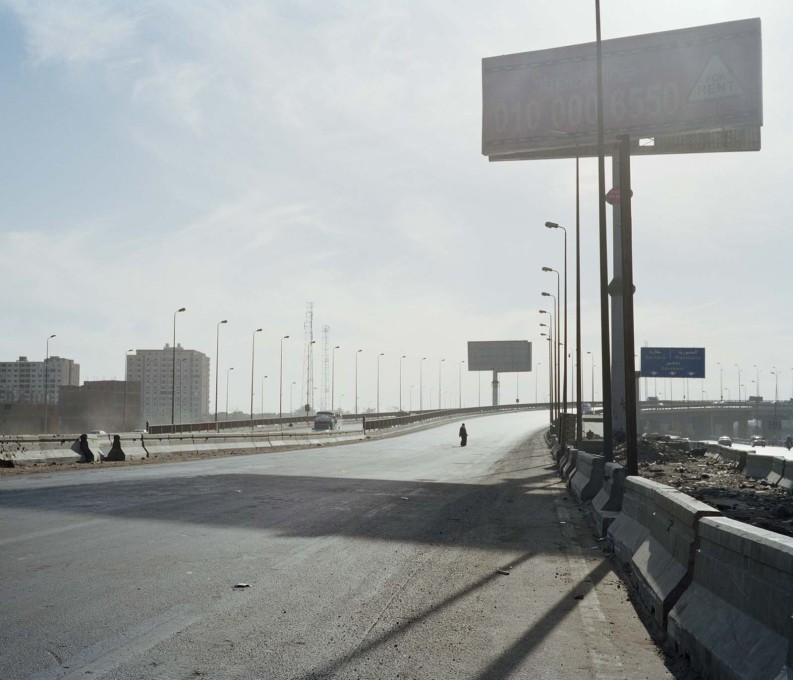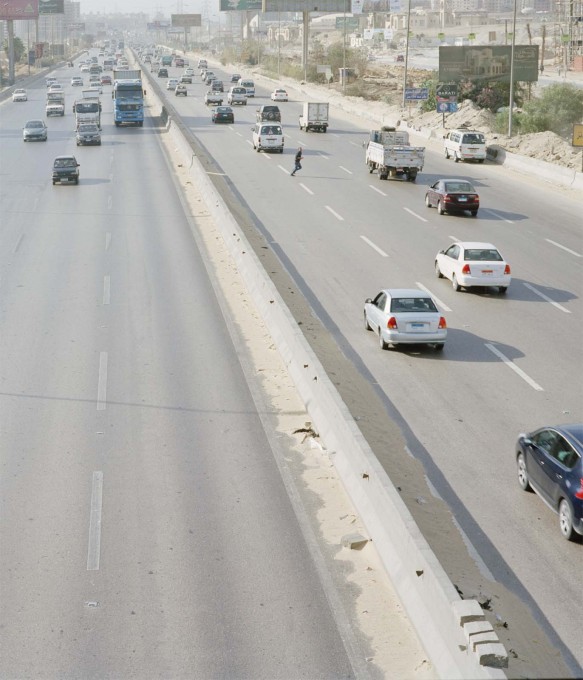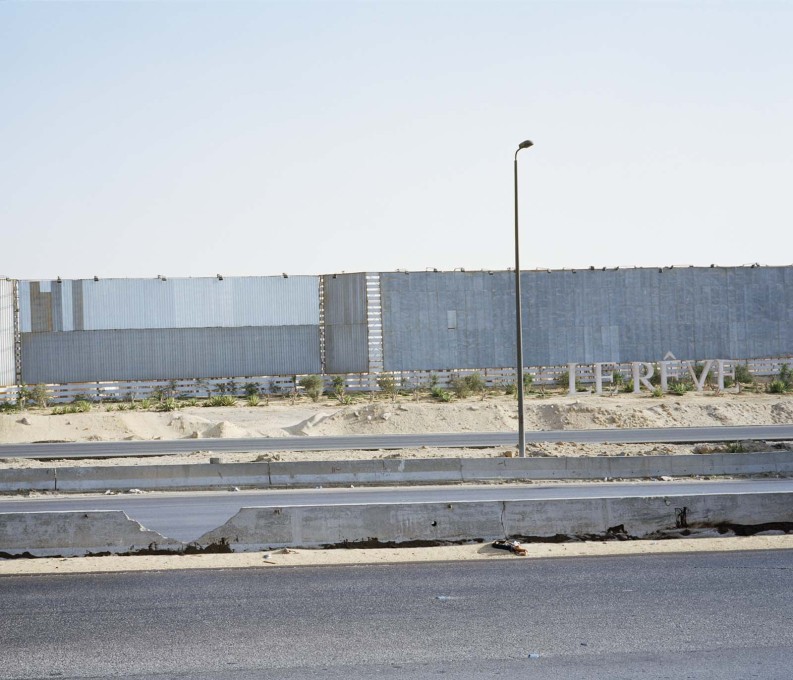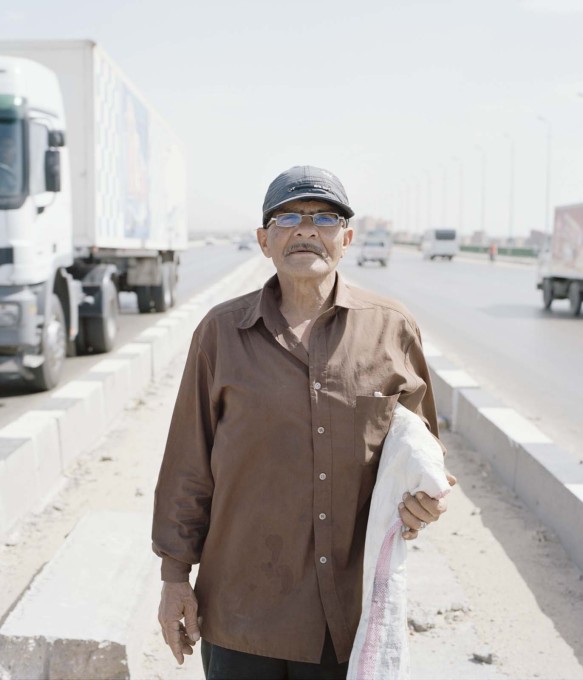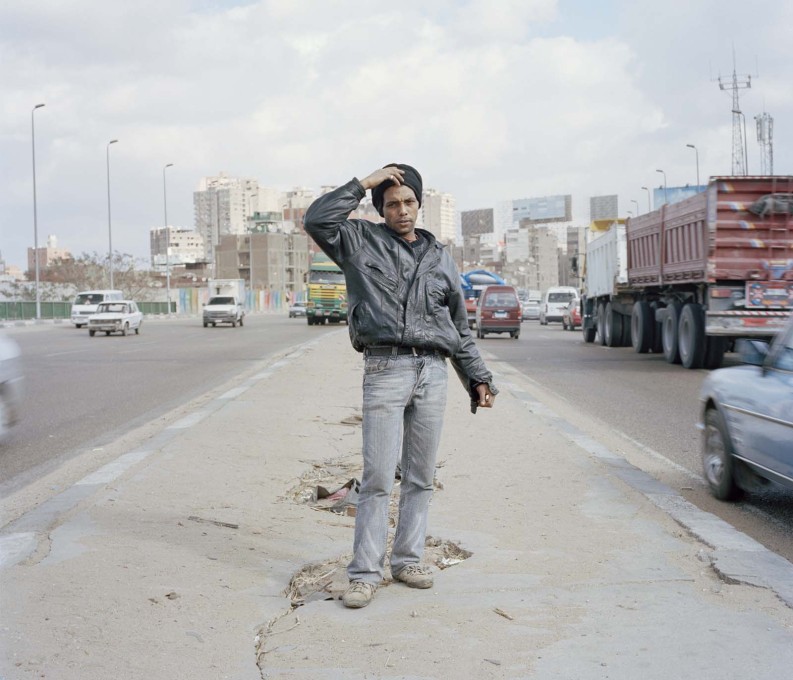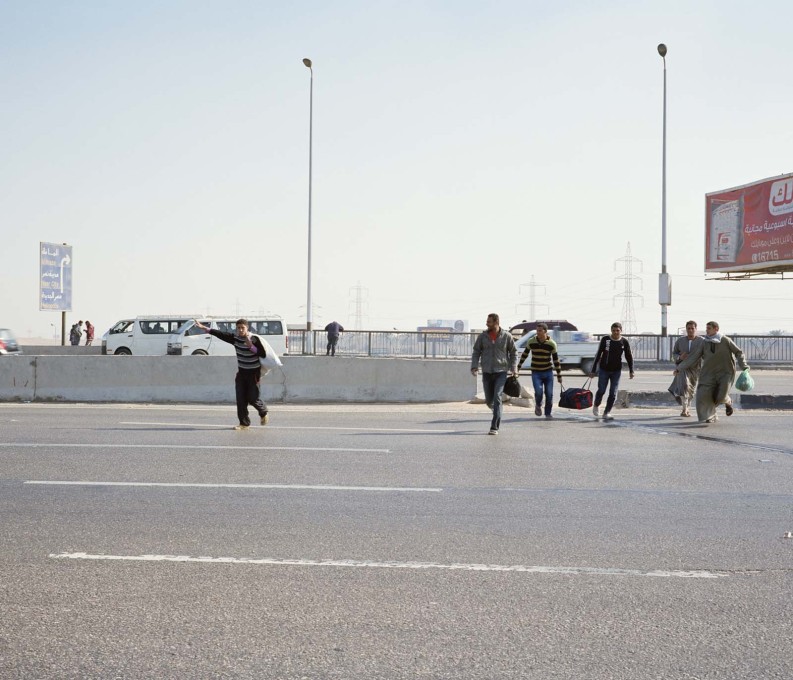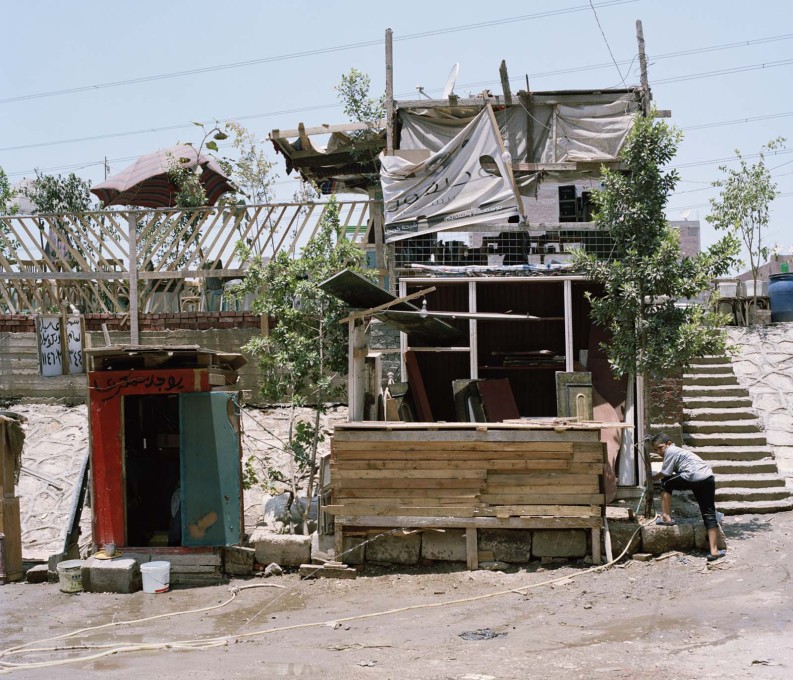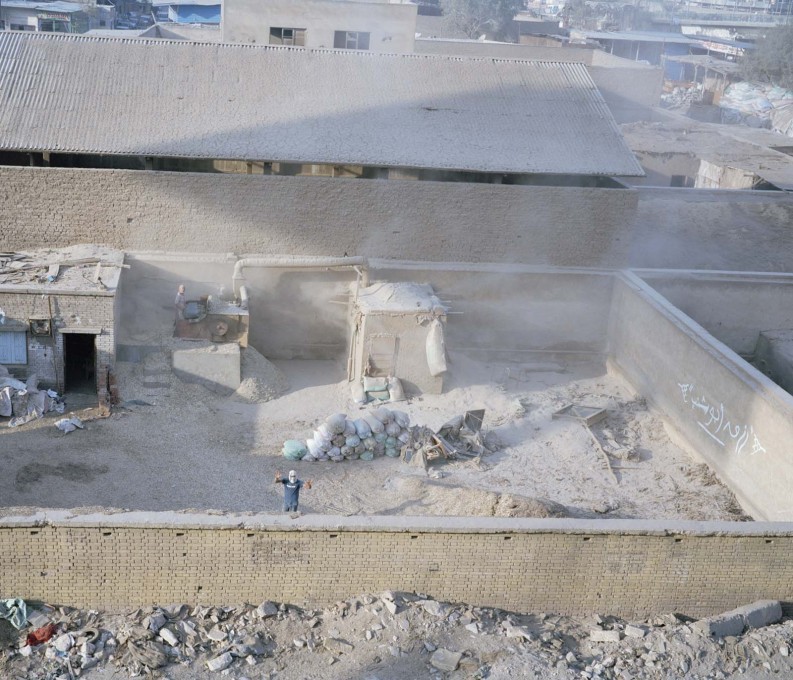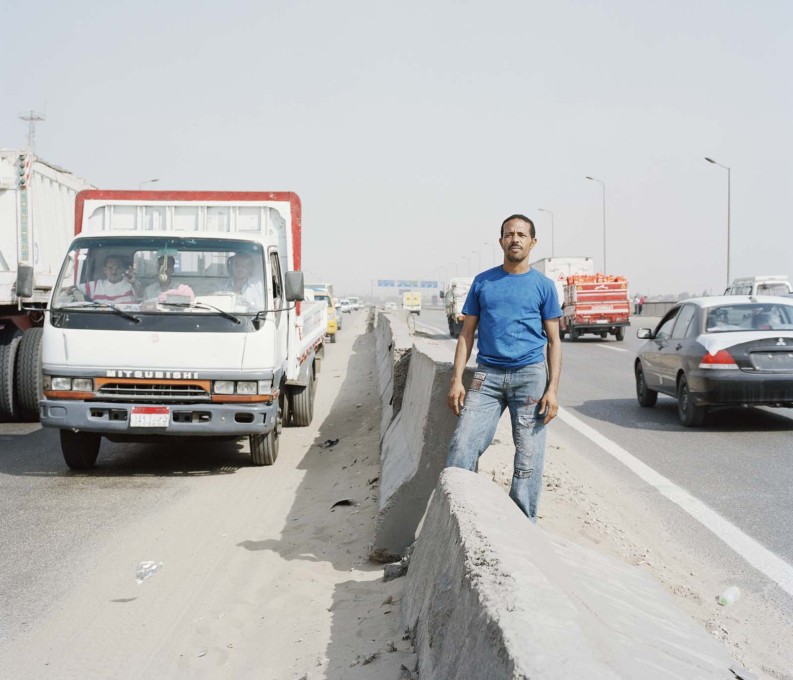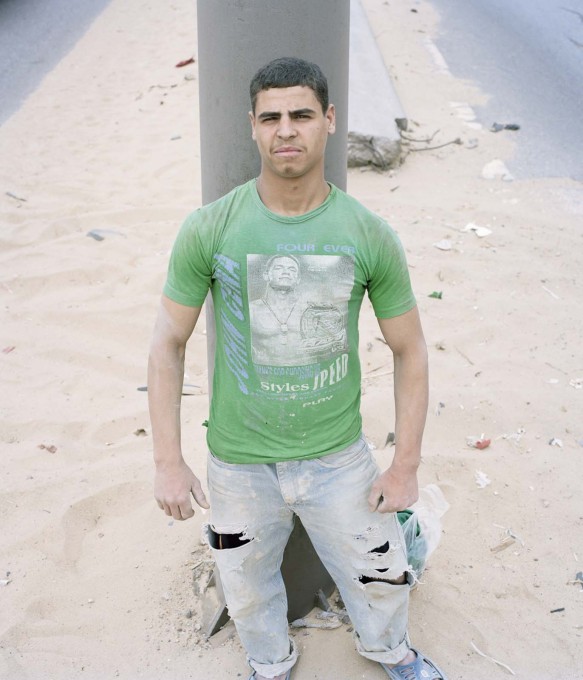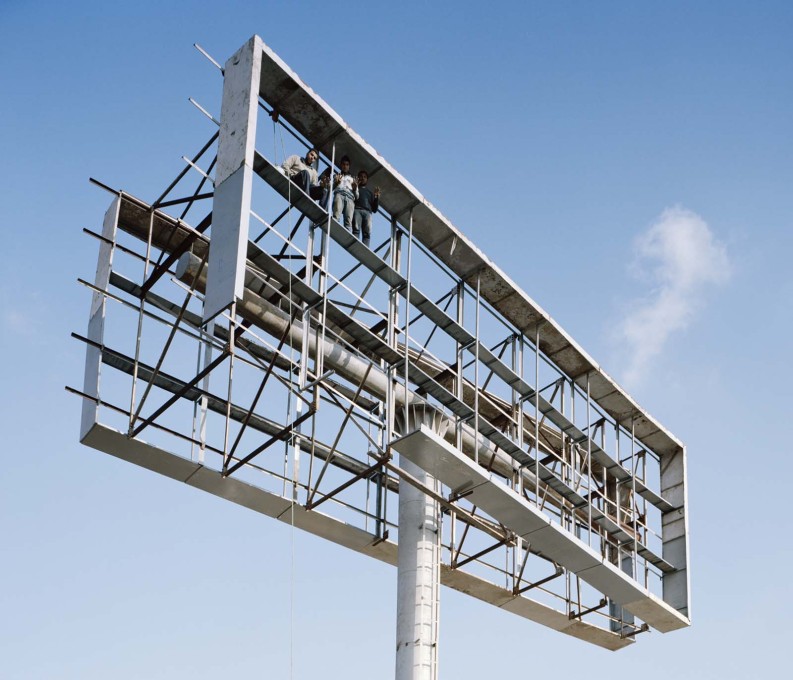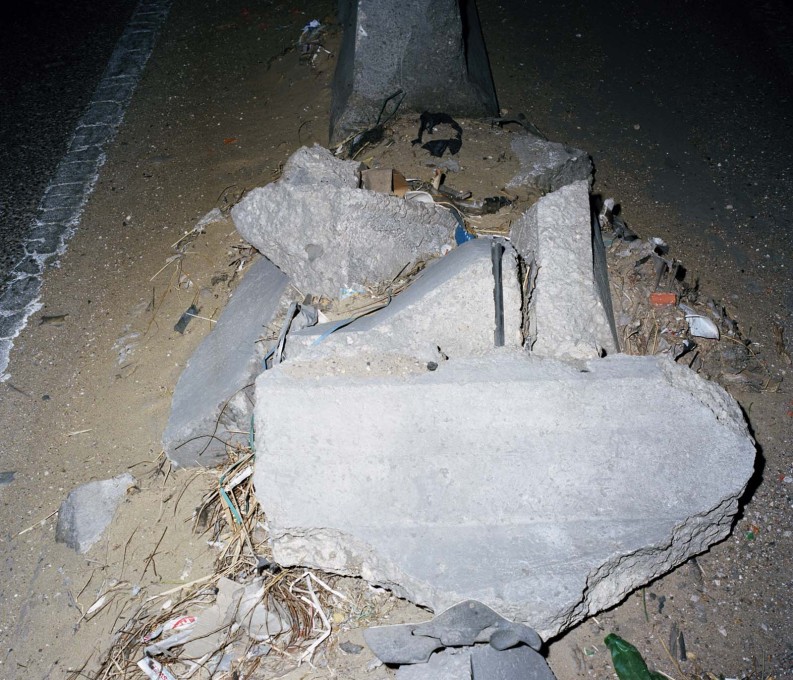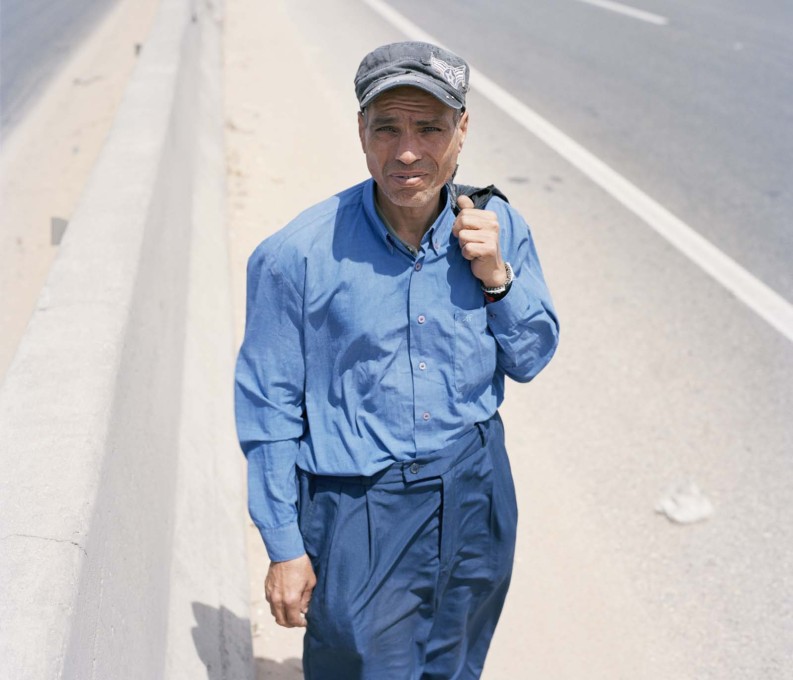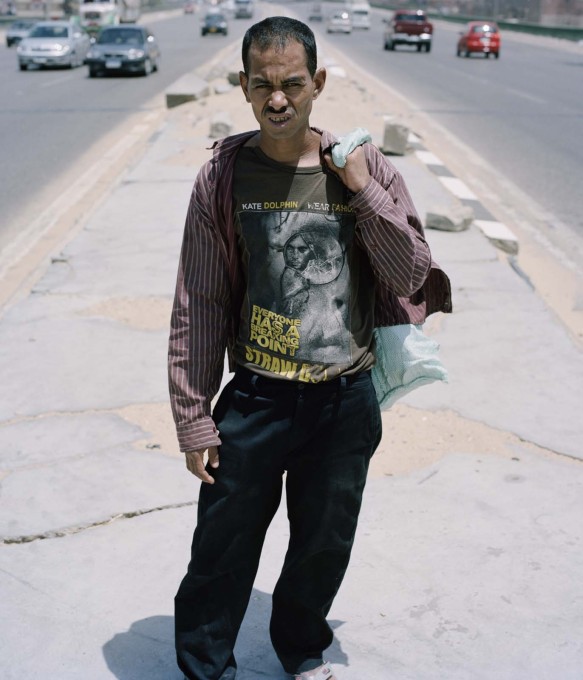Infrastructural non-places such as terminals and stations have long afforded photographers a rich body of source material. But how about the nondescript spaces of transit they are attached to, such as the roads or rails themselves? Japanese-born photographer Rio Saito developed a fascination not only with the empty space in the middle of Cairo’s thronging, mammoth ring road but also with the experiences the people who make perilous journey crossing it. He spoke to uncube correspondent Crystal Bennes about capturing the inbetween moments that happen in “middle space”.
The way you transformed this impersonal, arterial piece of urban infrastructure into something which is relatable to on a human scale is really impressive. Can you say something of the origins of this project?
My first visit to Cairo was about six years ago. I was then based in Tokyo, but decided to take a long journey seeking out another city in which to start a new life. Cairo was one of the cities I visited. Even if you’re just there as a tourist it’s hard to miss the Ring Road. It’s not only a highway, but the main road which people use for getting around in Cairo, going to and from the airport, and also to Giza and beyond.
My first impression of the road was very negative, I disliked the feeling of its exclusiveness – in the sense of containment – because it runs more than 70 kilometres in a circle, surrounding Cairo like a huge wall.
How did people respond to your presence taking images on the ring road? Were they surprised? Hostile? Indifferent?
Most of them asked me why I wanted to take their portrait. I had picked up a few basic phrases of Arabic from my Egyptian friends, which was how I negotiated permission to take the photos. I could understand “yes” or “no” in people’s replies, but nothing more than that.
I learned from the experience that I couldn’t read too much into people’s facial expressions. The portraits are all of people who had made the crossing to the middle, a place without any shade from the strong Egyptian sun, enveloped by the smog and dust from passing cars. Most of the faces which appear to show skeptical or angry expressions were just responses to the challenge of crossing the road. The frustration wasn’t directed towards me.
Did you stop people crossing to take spontaneous snapshots or were they more “staged” portraits?
For some of the images, I purposefully took photographs without perspective, with no views of the sky or cars in the background. I wanted, in a way, to remove a sense of direction, to bring a greater feeling of isolation to the people in the middle of the road.
In the portraits, I’m trying to capture a feeling of reality and unreality simultaneously. As to whether they are snapshots or are “staged”, I would say that they depict an “accumulated reality”. It’s like when you go for a long walk in the forest and perhaps later at home you find traces of the environment on your clothes: it tells you something and nothing at the same time.
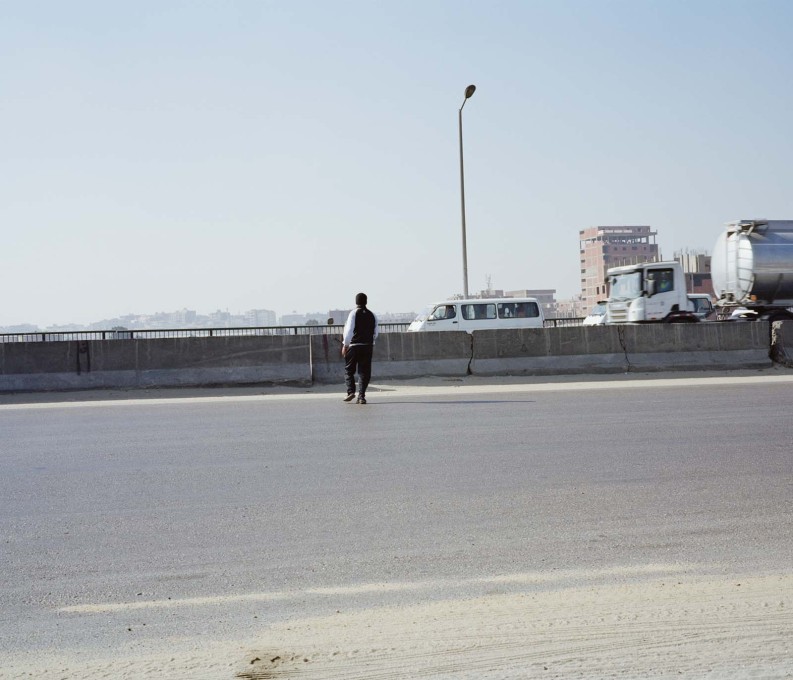
Why did you return over a number of years, rather than document the entire series in one visit?
I wanted to see and feel the unstable situation in Egypt over the course of a few years. I was also certain that repeated visits would allow me to tell the story in a more meaningful way than a single visit could. It takes time for the captured traces to build up, to enable the story to be told.
In a previous interview, you mentioned your attempts to convey the emotion of people trying to cross the road as being something that “simply goes ahead”. What did you mean by that?
That phrase referred to the people trying to cross the road being neither productive nor unproductive, but instead they are just existing, like the road itself. However that wasn’t the most important thing I was trying to say with the work.
In fact, the most important idea is that whilst the middle of the Ring Road is an empty place where people shouldn’t be, there is the feeling that there is something present there, like a lingering flavour. I wanted to draw attention to that feeling.
Perhaps there is something special in that empty space though, because people still try to go there. They try to cross there, even when they know they risk their lives. That’s what I really wanted to say. I want to leave people with the thought that maybe there is something there, in the middle space.
Interview by Crystal Bennes
The photographer Rio Saito was born in Tokyo in 1980 and lives and works in Paris.




